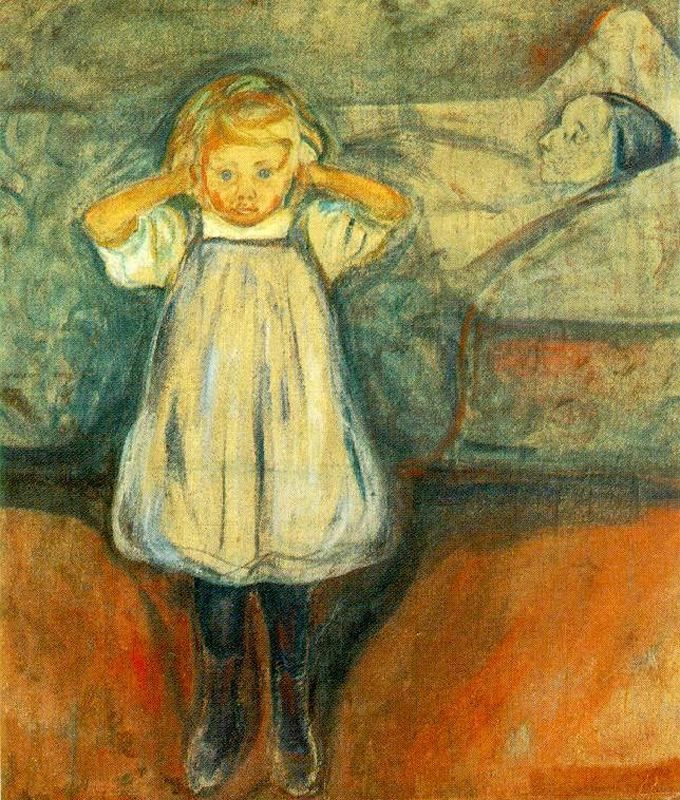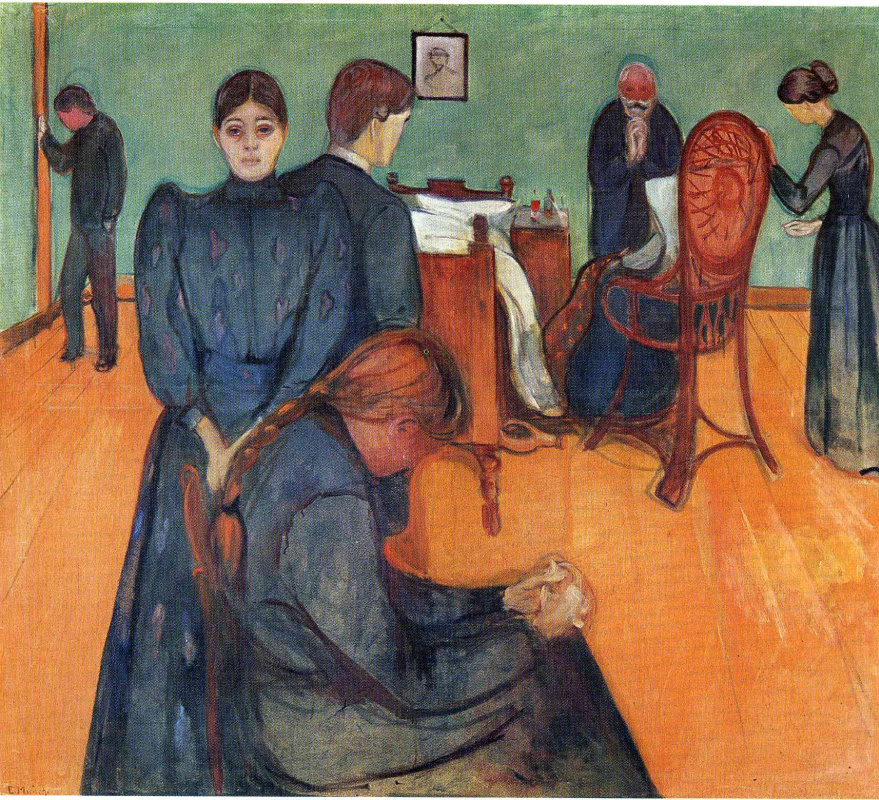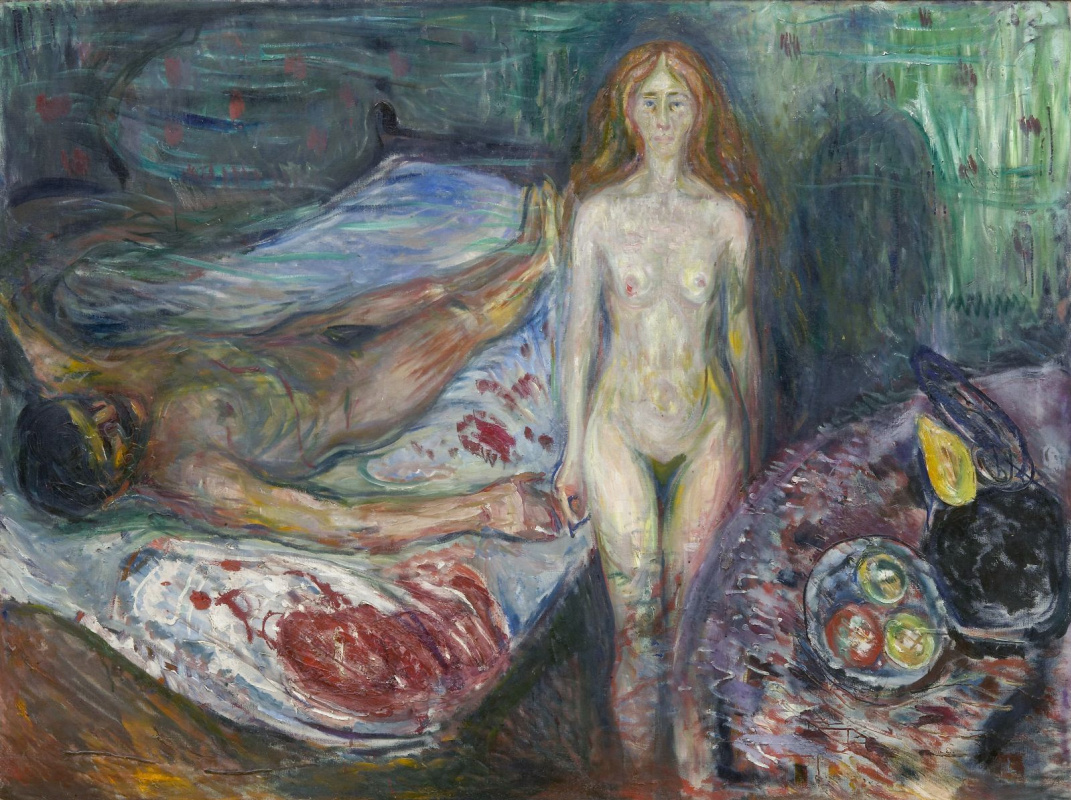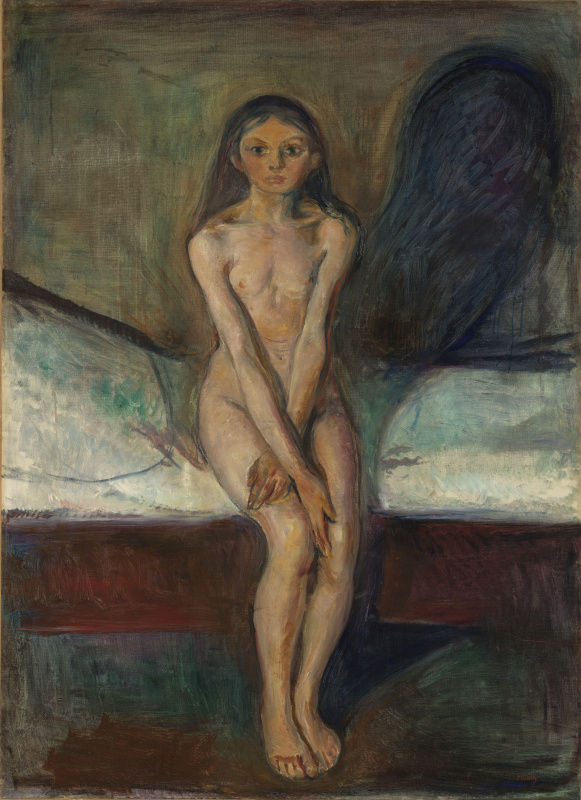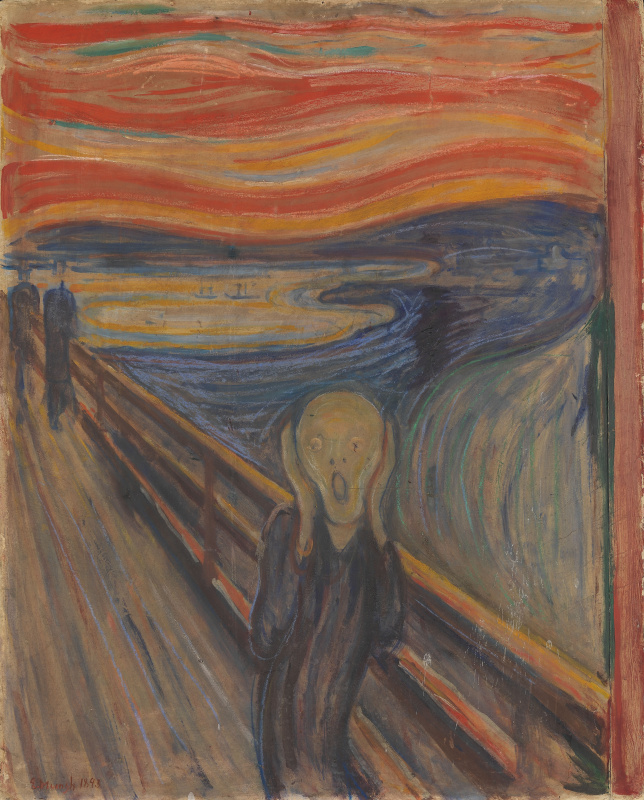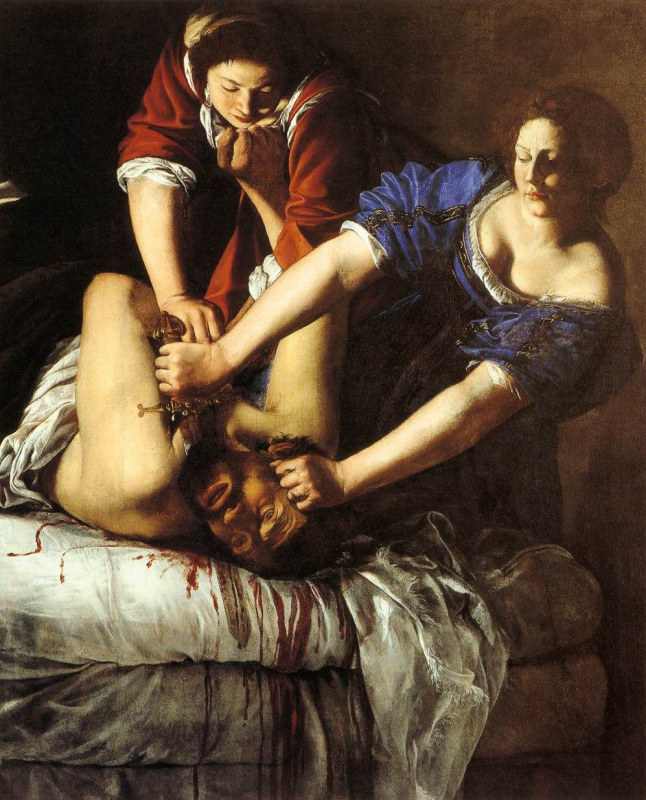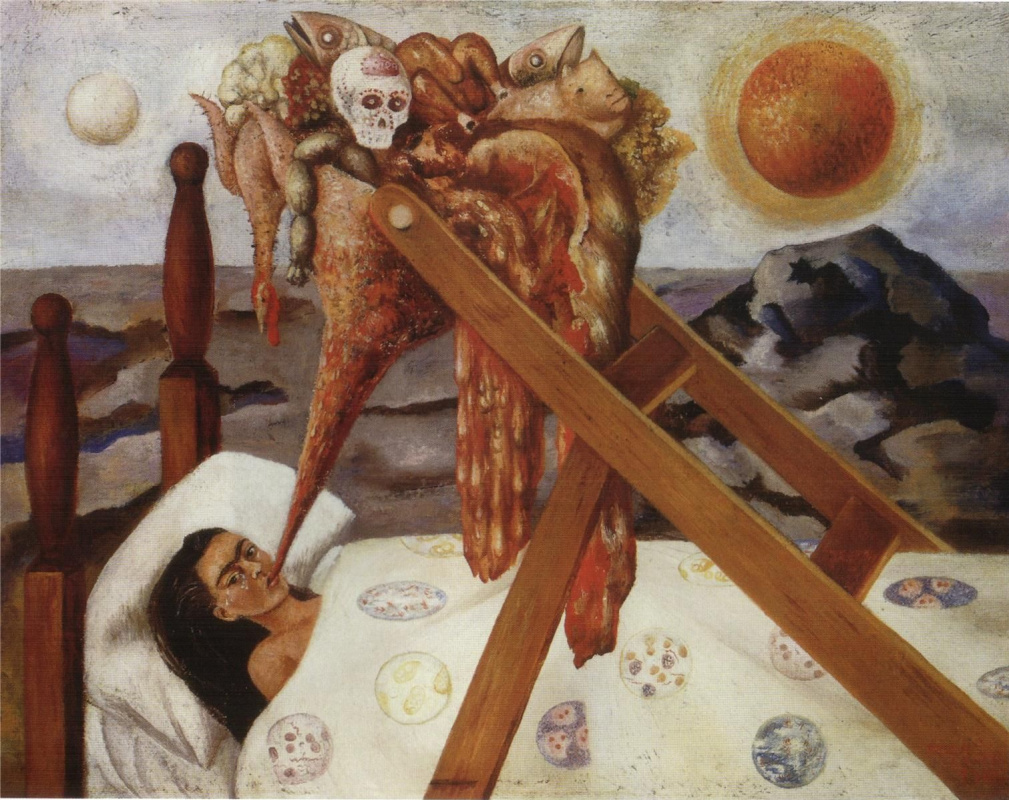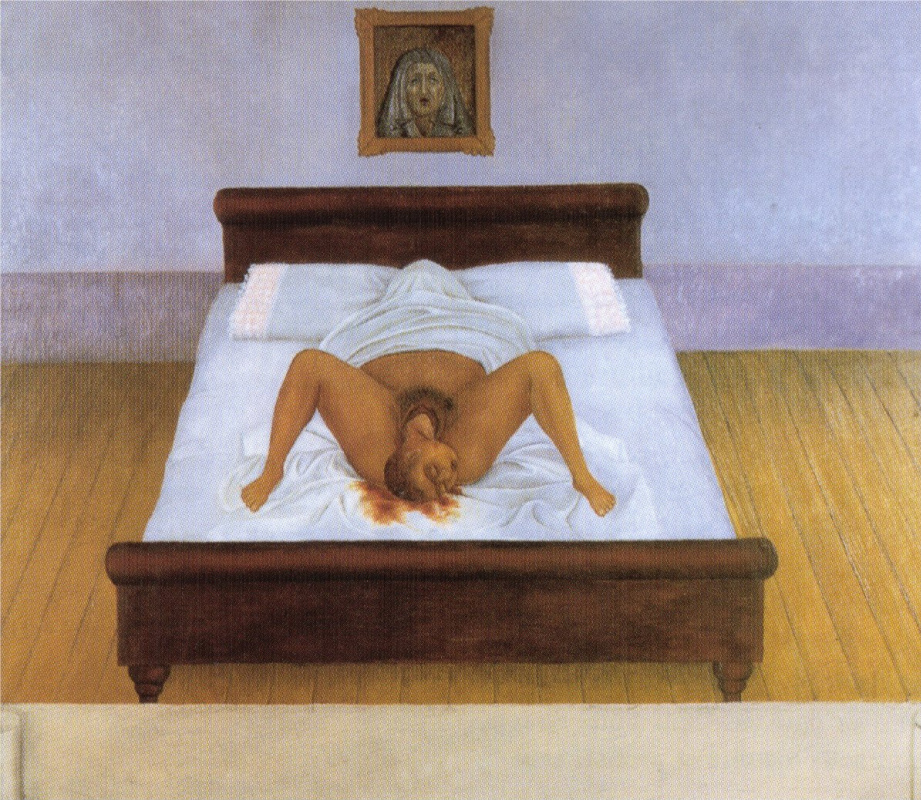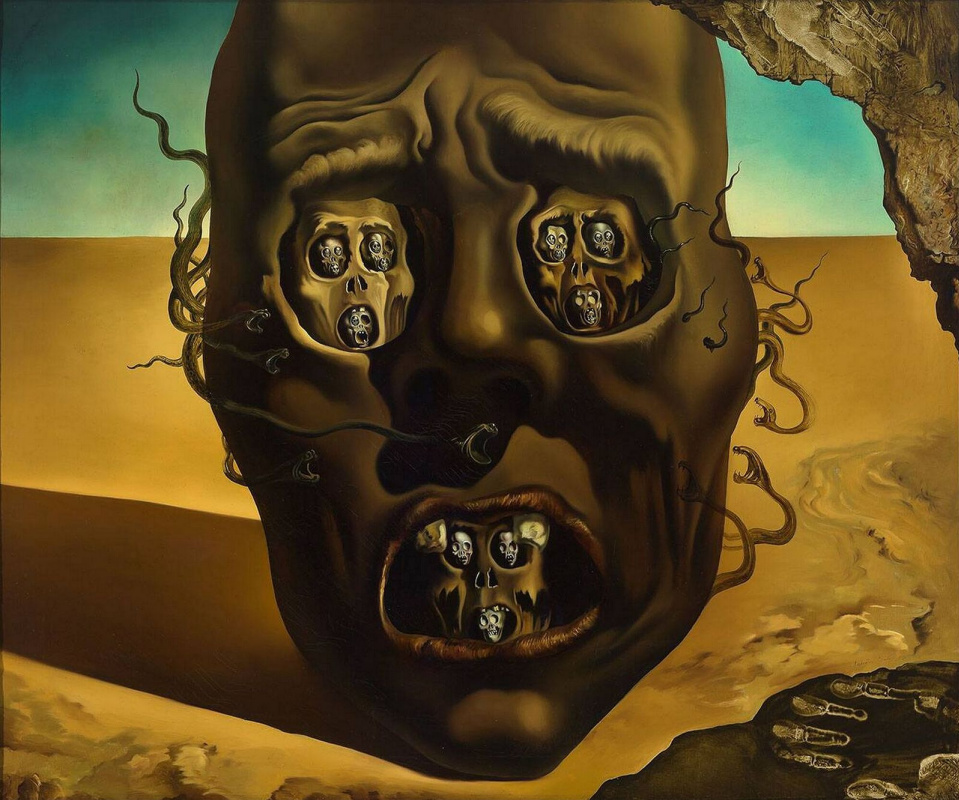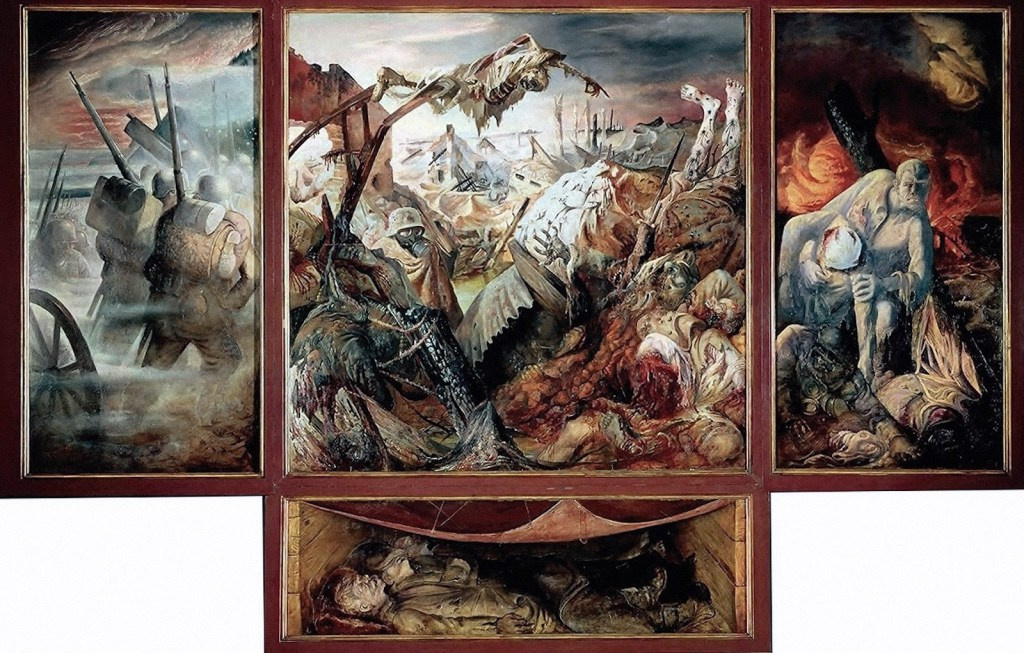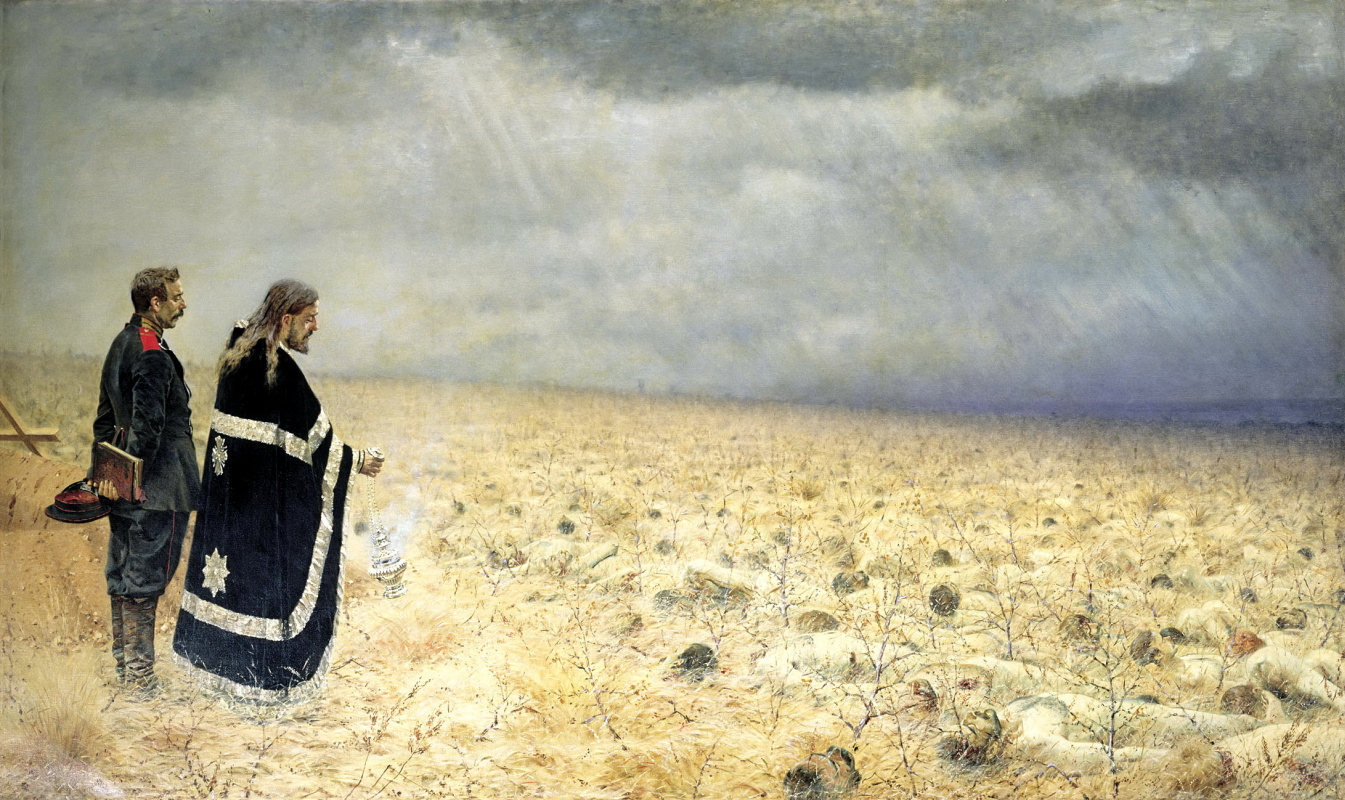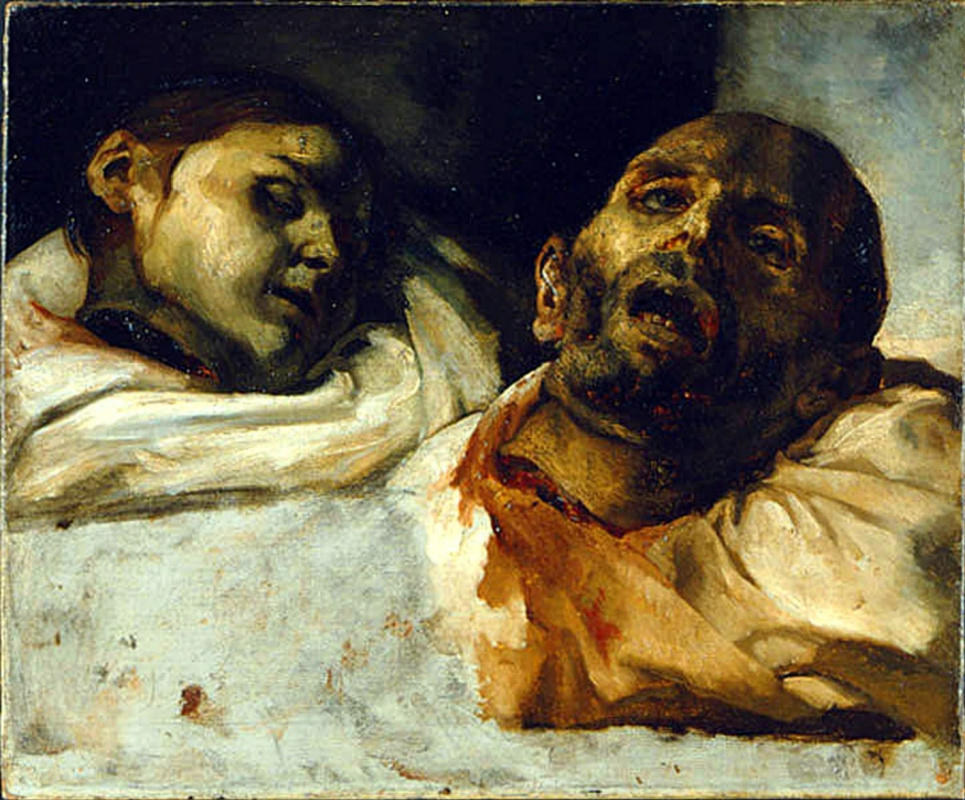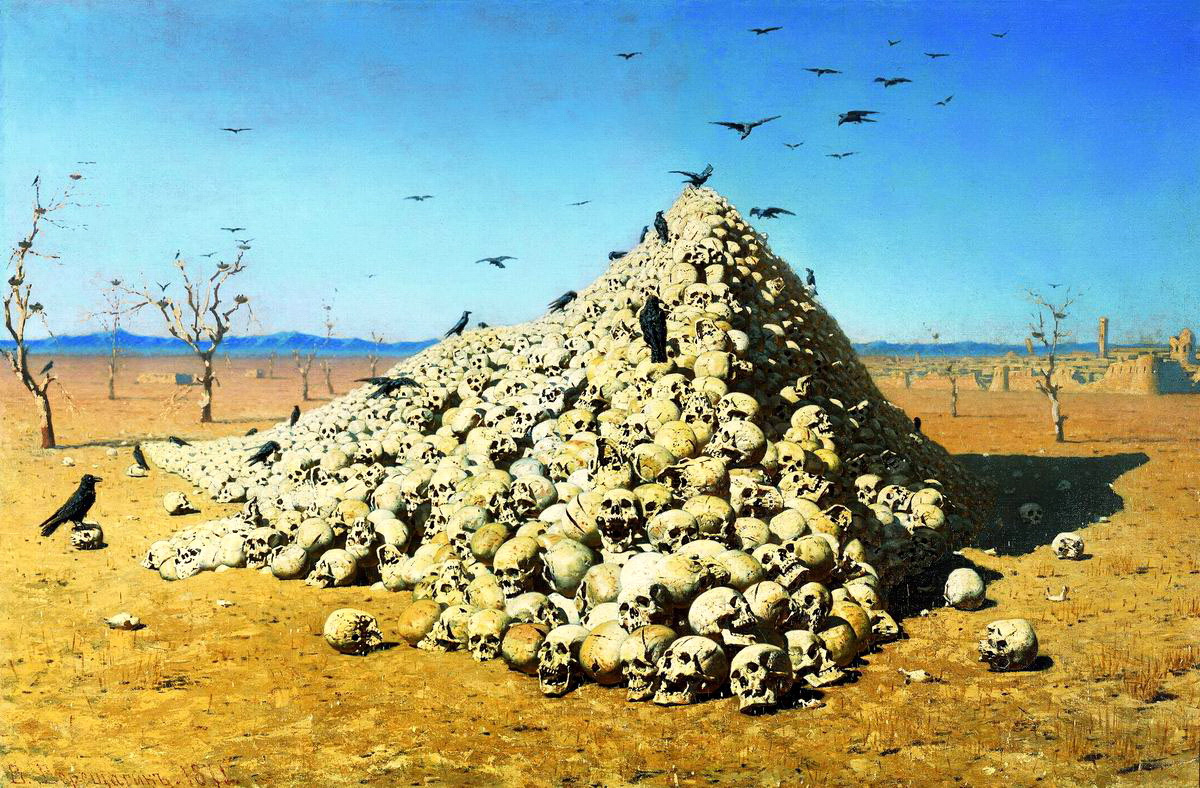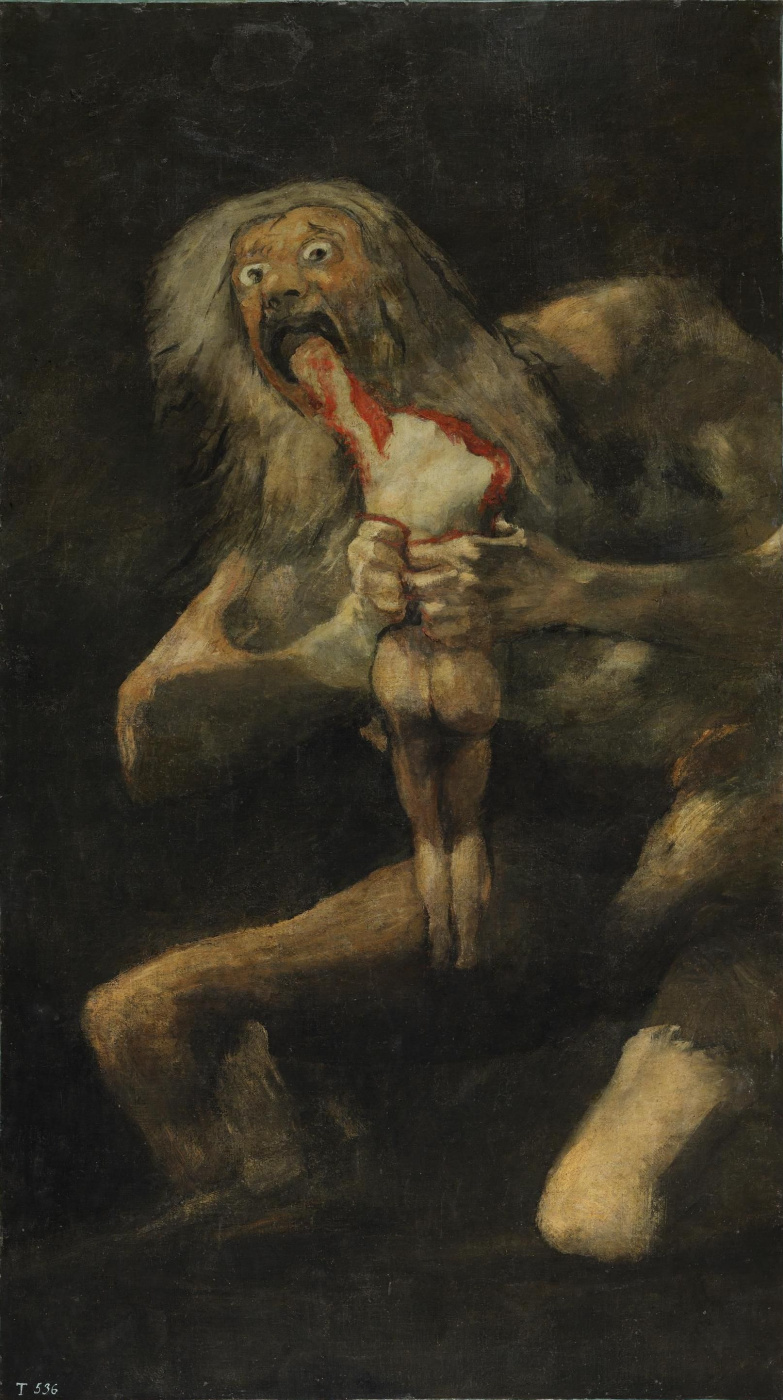This ten is meant to be pretty scary. However, it may make you experience other feelings. For example, the surprise about the fact that Bosch isn’t in the top ten scariest paintings. Or the thrill of discovering a new name: the top ten does not only contain famous masterpieces.
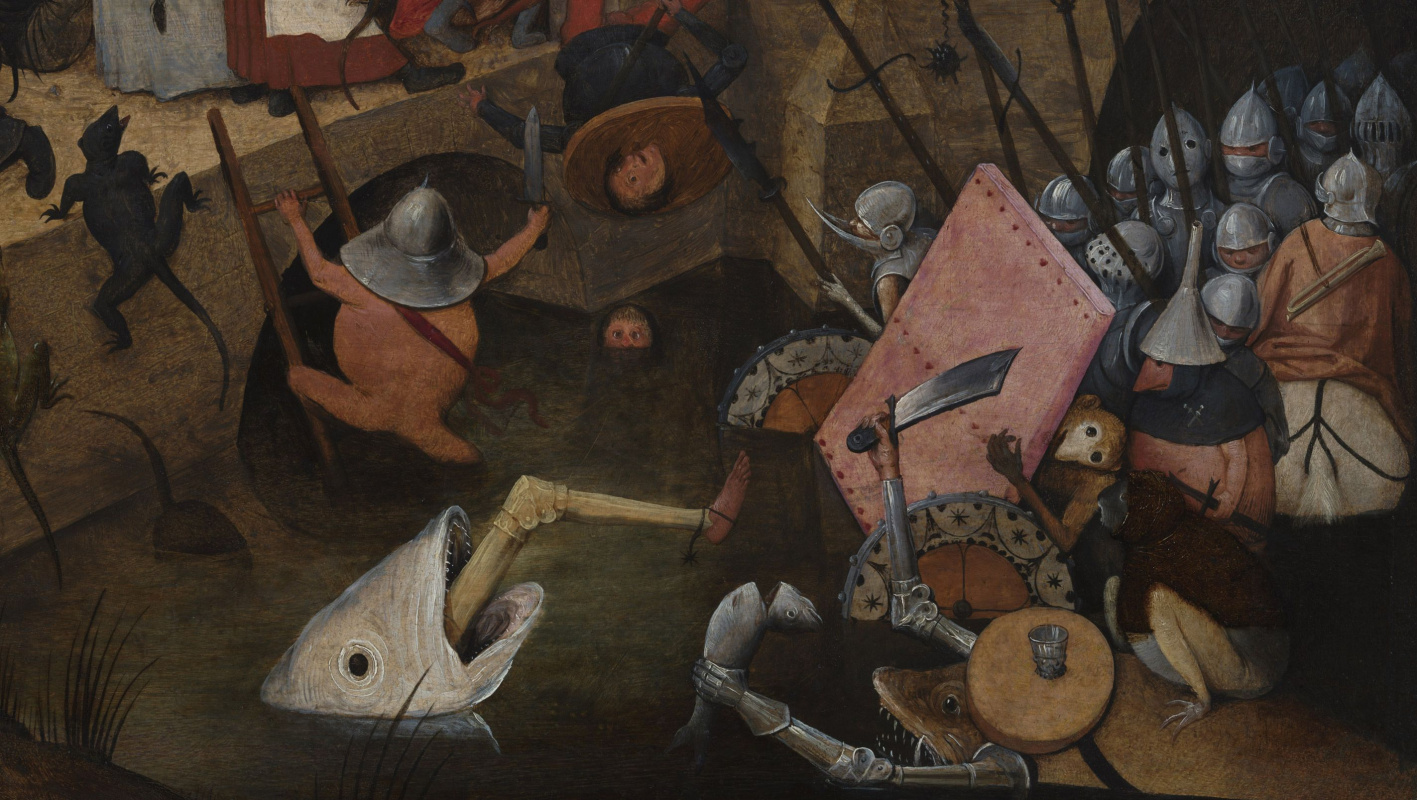
Before we announce the top ten winning pictures, here are some figures and curious facts.
The Arthive readers proposed 122 works for voting.
The record holders for the number of works nominated were Zdzisław Beksiński (7 works), Edvard Munch (6 works) and Francisco Goya (5 works).
The Arthive readers proposed 122 works for voting.
The record holders for the number of works nominated were Zdzisław Beksiński (7 works), Edvard Munch (6 works) and Francisco Goya (5 works).
Only three of the 122 works nominated for the title of the scariest artworks were created by female artists. They include:
Among the nominated works, there were recurring themes. For example, two Medusas (more precisely, their severed heads) by Caravaggio and Rubens. Or illustrations for Dante’s Divine Comedy.
Bouguereau’s Dante and Virgil painting did not make it into the top ten of the most terrible works, but in the previous Arthive readers poll, it took second place for the most beautiful hands in the visual arts.
A large number of paintings dedicated to the horrors of war are striking among the nominated works. Apparently, it is the real threat of war, and not fictional translucent ghosts or other tales from the crypt, that scares us the most in 2019.
And now the winners of the poll: 10 scariest pictures according to the Arthive readers, from the tenth place to the first:
10. Janis Rosenthāls. Death. 1897
Jānis Rosenthāls, Latvia’s most popular artist, depicts a meeting with Death that is inevitable: the mother of a dead child looks at a woman in a white frown (it seems that she is in the first stages of accepting death — it’s denial and anger), but seems ready to open her fingers and give up the baby. The child is no longer with her, not in the world of the living — he too is wearing white robes symbolizing death. Skinny woman with a sickle, though depicted leaning over the child, makes the impression of a very high: if she straightens — will not fit on the canvas, as do not fit in the picture in the whole height of the tree: death is certainly terrible, especially when it is for his victim prematurely, but still it is an integral part of nature, like the forest from which Death came out, into which she will take the baby and which is her size.
Death
1897
9. Vasily Vereshchagin. Defeated. Requiem. 1879
This huge painting is three meters wide! — makes an indelible impression when you stand in front of it in a museum. The mournful sky. A field dotted with corpses that has no end. And silence. It’s even scarier when you learn the story of a painting. During the storming of Plevna, Vereshchagin’s younger brother died. The painter himself was healing his wounds after that time, but tried to find his brother’s body to bury him. However, he failed to do so. "There was no possibility to pull out the body — it remained, to my greatest grief, to swell and rot in the masses — the terrible mass of our soldiers' corpses that day," the artist recalled.Vereshchagin was badly scolded for this painting (as well as for the entire Balkan series, which includes it). The reason was lack of patriotism. After all, instead of glorious victories of the Russian army, the artist, as usual, painted the abominations of war as such.
Defeated. Memorial service
1879, 179×300 cm
8. Zdzisław Beksiński (1929—2005). Untitled
Polish artist Zdzisław Beksiński (1929—2005) was not a star during his lifetime: he lived modestly, was a shy man, did not entertain the public with eccentric antics (only once he burned in the backyard a mountain of his works, which he considered too personal and not successful enough), did not like to go to museums (even at his own exhibitions), did not give names to his paintings. But since the 1960s his exhibitions have been successfully held, in 1970s Hans Rüdi Giger, an artist who invented the image of Alien for the film of the same name, a fan of the work of the Mexican became a film director and nightmare collector Guillermo del Toro.However, Zdzisław Beksiński did not have to add scandal to his life for the sake of fame. Firstly, his works coped with this task: for example, a series of photographs (and Beksiński was also fascinated by this art form) and drawings with sadomasochistic images. Secondly, the last years of Beksiński's life were such a nightmare, that newspapers printed his name in the biggest font: in 1998 his wife died, in 1999 his son killed himself, and in 2005 the artist bled out on the doorstep of his own house — 17 stab wounds were inflicted to him by the son of the housekeeper, the guy either tried to rob the artist, or asked for money and did not get it.
It would be wrong to explain Beksiński`s paintings with these tragedies: most of them were painted before this black final strip. Then where did his heartbreaking images come from? Probably from his childhood. He was born in 1929. He was already a teenager during World War II. There was another nightmare in his youth when he studied architecture and went to work on a construction site. He didn’t like that job, to say the least. That must be why the crowds of dead in his paintings often look like they’re made of concrete, not bones.
By the way, about the above-mentioned Giger. The Arthive readers did not offer any of his work as scary enough for this vote.
7. Zdzisław Beksiński (1929—2005). Untitled
Yeah, Beksiński again. In the top ten scariest paintings were two of his works and seven were nominated.Beksiński is a very prolific artist. The exact number of his works (and this, apart from photographs, collages, drawings and sculpture itself) is unknown. Interestingly, the work of other artists did not fascinate Beksiński. He admitted that he could look through an album with reproductions every few years in the dentist’s queue, if there was nothing more interesting on the coffee table. And he could recognize Da Vinci and Picasso’s paintings — three each. "In short, painting does not interest me much, I am not looking for a meeting with it, I meet it accidentally and naturally, like a tree and a cow," said the artist.
6. Francis Bacon. Portrait of Pope Innocent X. 1954. Private collection
It is one of the many works by Francis Bacon after the Portrait of Pope Innocent X by Diego Velázquez. The painting, which captures an endless scream, an eternal and hardly explainable horror (did Pope learn something terrible about God? does he sit in an electric chair and there is no one to unplug it? doesn’t he want Bacon to paint him?), the reality dissolving and flowing off the canvas, which can’t be grasped even by eyes, because they are forced to close in horror.Art historians can tell you a lot about this painting. And about the rattling mixture of guilt and pain that fell on people in the post-war era. And the oppressive atmosphere of the Cold War. The existential longing, finally. But Bacon himself used to describe his paintings as follows: "I try not to interpret my own works. I don’t know what they mean. I don’t tell stories, I have nothing to tell. But I like the power of the image."
Portrait of Pope Innocent X
1954, 152.7×117 cm
5. Théodore Géricault. Guillotined Heads. 1810s
Théodore Géricault is the brightest representative of French romanticism . If you want to remember or explain to someone once and for all that romanticism is not romantic at all, here are some of Géricault's works: dead people (1, 2), a dead horse, a dead cat. As for these guillotined heads, they are Géricault's studies for his main masterpiece, the Raft Of The Medusa. At that time, the artist regularly visited hospitals and morgues, and sometimes stinky severed limbs were delivered directly to his studio: he wanted to depict the corpses on the canvas as accurately as possible, although the final version of the picture is devoid of the naturalistic horrors.
Guillotine chopped off heads
1810-th
4. Ken Currie. Gallowgate Lard (Self-Portrait). 1995
Ken Currie (born 1960) is a modern Scottish artist, a great admirer of Francis Bacon’s work, which is obvious when you look at his works. One of the central motifs in Currie’s work is the depiction of aging, disfigured and even decomposing bodies: this theme emerged in his painting as a response to the political and humanitarian disasters of the 1990s in Eastern Europe. Prior to that, he painted his horror of Margaret Thatcher’s politics, and in his later work, for example, there is a Three Oncologists painting dedicated to the fear of cancer.Ken Currie is from Glasgow, Gallowgate is one of the city districts. The title of the painting, which took 4th place in the list of the most terrible ones, clearly points to some lard from Gallowgate. To paint the portrait, Ken Currie added beeswax to the oil paints — this is how both human skin and the horror of the person in front of this painting look more natural. Ken Currie often paints himself in his creepy paintings, and then his interviewers well acquainted with the work of Currie, but not with himself begin their articles by describing how they suddenly found themselves facing the artist and recognized the prototype of his artistic nightmares.
Ken Currie does not like to explain the meaning of his paintings. One day he even destroyed his painting after someone claimed that it clearly depicted the banking crisis. Currie believes that painting dies when it’s unravelled. He considers the ideal situation when viewer leaving the exhibition mutters: "What was that?"

Ken Currie. Gallowgate Lard (Self-Portrait). 1995. Canvas, oil. Aberdeen Art Gallery (reproduction source)
3. Vasily Vereshchagin. The Apotheosis of War 1871
Vasily Vereshchagin is not one of those artists who give the public the right to look for meaning in a picture, to draw conclusions and make lessons. To avoid misunderstanding and inconsistencies, he decorated the frame for The Apotheosis of War with an inscription: "Dedicated to all the great conquerors — past, present and future". Alas, we can not claim the success of the Vereshchagin’s lesson. But the fact that his painting frightens people to this day (even the strongest and fearless) is already quite good.
The apotheosis of war
1871, 127×197 cm
2. Francisco Goya. Saturn Devouring One of His Sons. Ca. 1823
Among the nominees were a couple of Saturns devouring their children: this one by Goya, and the Rubens’s one, the latter did not make it into the top ten. Saturn ate his children because he was prophesied: the children would deprive him of power. Rivalry, love and hate of fathers and children, an eternal subject: it provides artists and writers with inspiration, and give stable income to psychotherapists. It is no wonder that this painting retains its frightening relevance even now, when it is difficult for the heroes of ancient myths to compete with the horrors of the newswire.
A series of gloomy paintings. Saturn devouring his children
1823, 146×83 cm
Arthive readers called this painting by Goya the most terrible for the most times. Its relevance is also evidenced by how often it is reproduced in modern popular culture. Thus, the modern digital artist Kiszkiloszki dedicated a whole series of his gifs full of black humour to Saturn and his appetite:
And director Oliver Stone showed Goya’s Saturn in his Wall Street: Money Never Sleeps film (2010), which tells how business sharks grind their teeth on their own children, and corporations devour all people indiscriminately. Some stills from the film follow, with the painting that actually hangs in the Prado, and not in the office of a financial tycoon:
1. Pieter Bruegel the Elder. Dull Gret. 1563
How do you explain the victory of this painting? Firstly, by the fact that it is an absolute masterpiece, albeit rather horrible: Gret is heading into the jaws of Hell through a landscape inhabited by monsters that represent vices. The article about the Dull Gret on the website of the Museum Mayer van den Bergh, where it is stored, is titled "A Horror Film in Painted Form". And the epigraph rightly states: "Like a director of horror films, the painter tried to appeal to all the senses in order to arouse fear and create pleasure at the same time."
Dull Gret
1563, 117.4×162 cm
The second reason is the sudden relevance of the name Gret. The voters commented on the picture with the phrase "How dare you?" — it belongs to 15-year-old Swedish activist Greta Thunberg, who went to the UN rostrum no less decisively than Gret in this picture, and was also called mad by couch diagnosticians.






